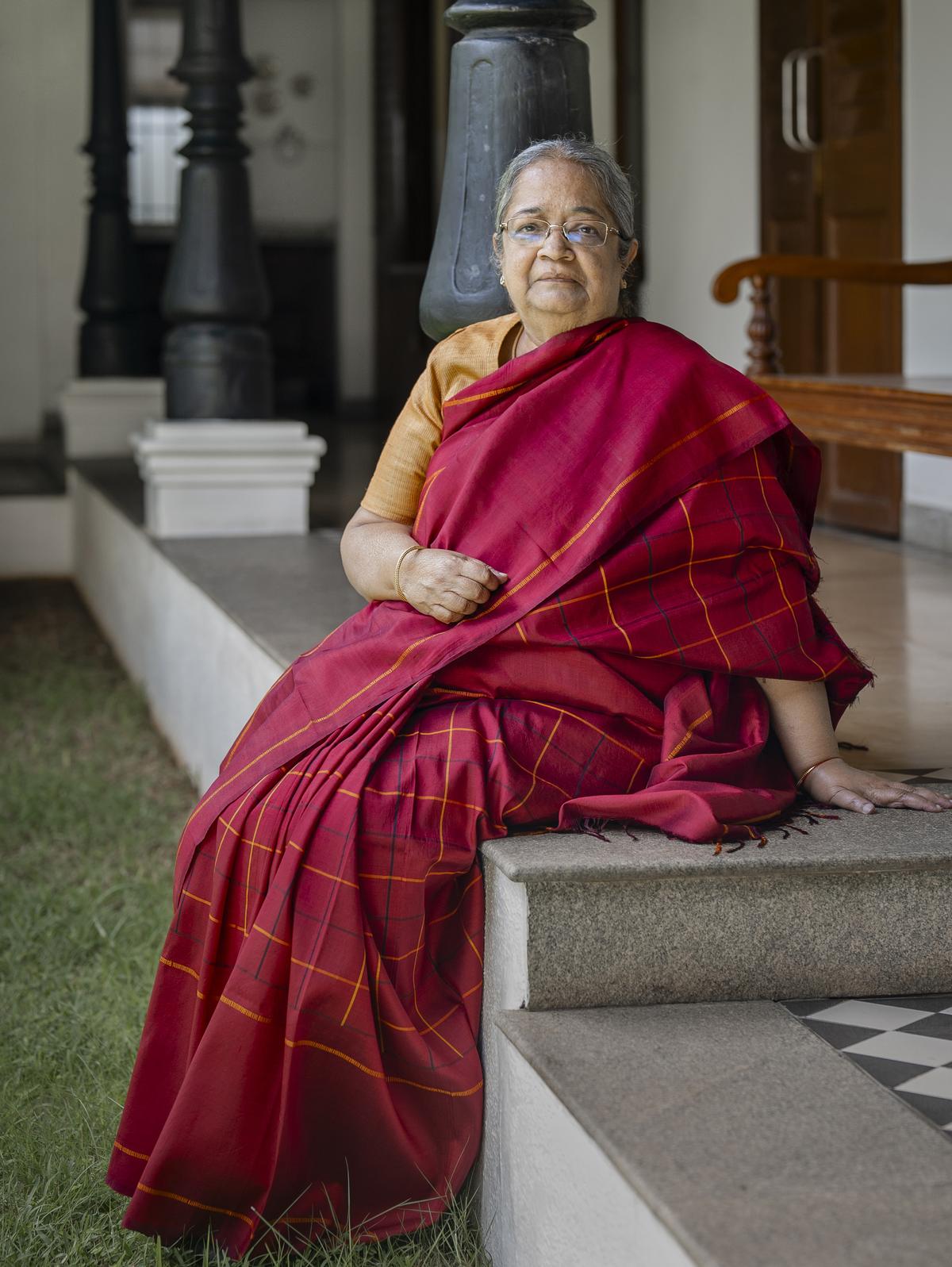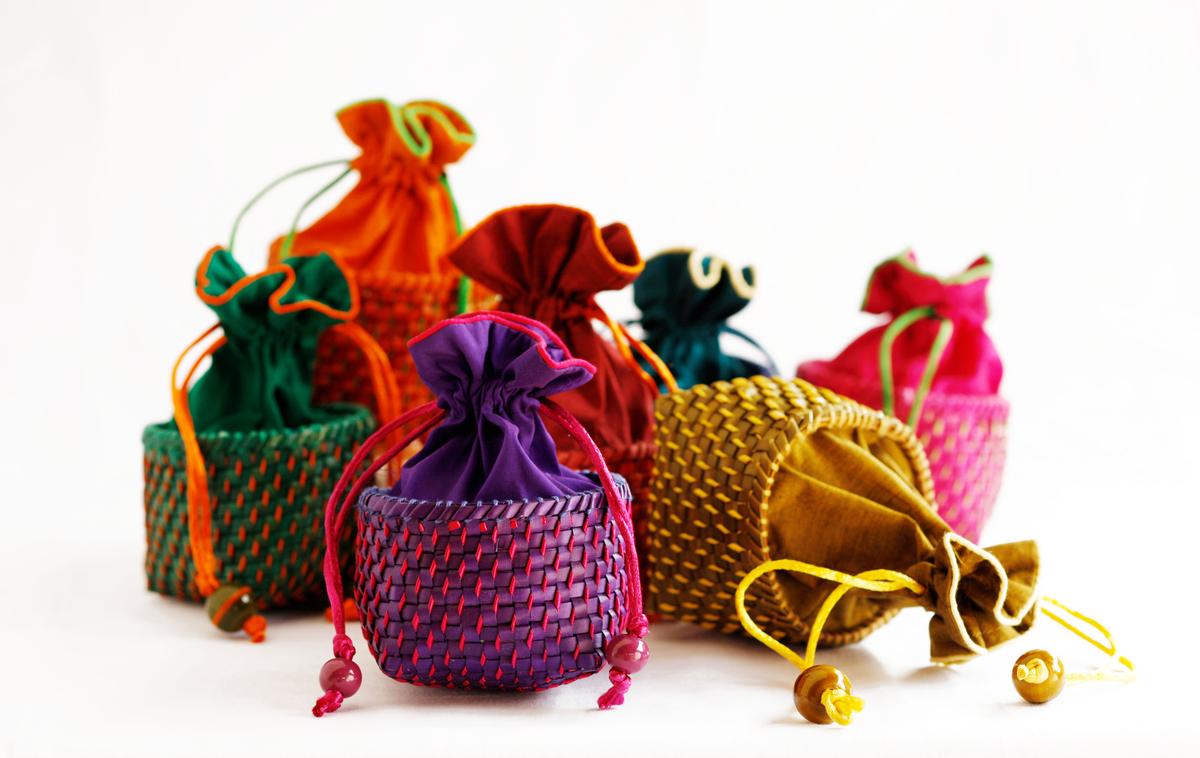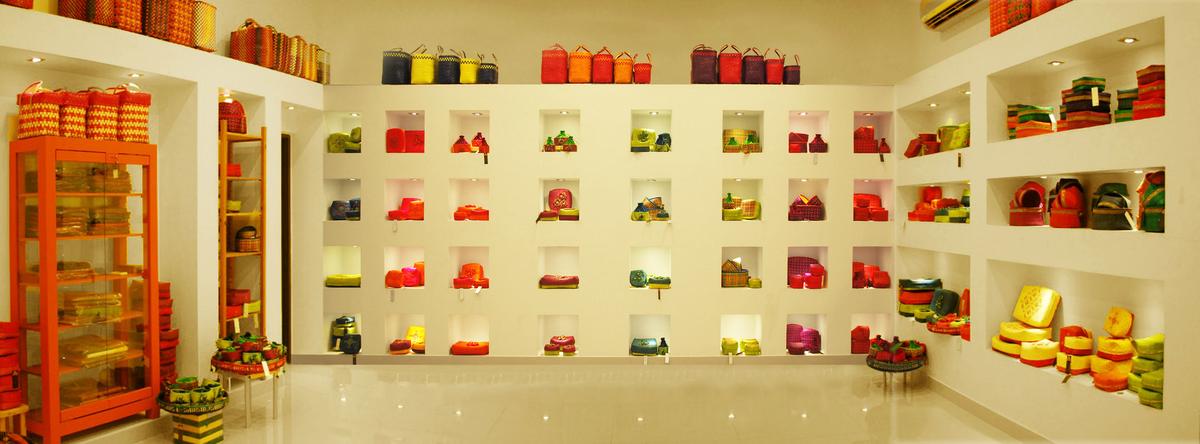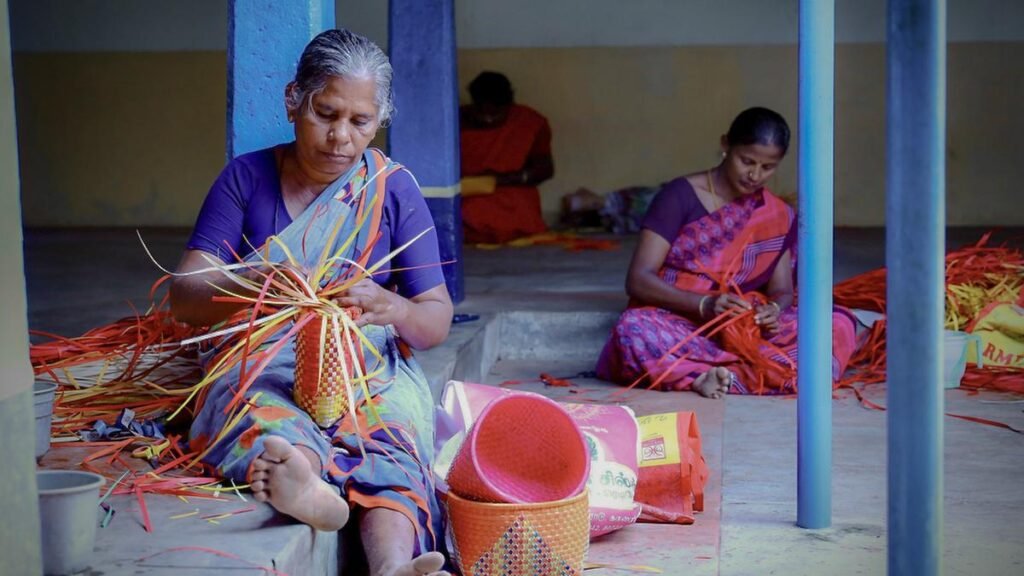Not everyone in Chennai knows of Manjal in MRC Nagar and its jewel-coloured kottans. Quiet and unassuming from the outside but a hive of activity inside as customised baskets, fashioned from palm leaf or from plastic, are packed at breakneck speed. They make their way to some of the country’s most high-profile weddings, and often include sari boxes that showcase Chettinad’s finest basket weaving tradition.
That said, for most of us, this is where we stop for little jewel gift boxes or beach, picnic and wine bags before trips. A friend and colleague takes hers (the plastic version) to the gym. It appears the city’s Japanese and Korean residents also favour the intricately woven plastic baskets for their cheery designs and durability. As for Visalakshi Ramaswamy, the singular force behind M. Rm. Rm Cultural Foundation that runs Manjal, you will be lucky if you find her there. For Ramaswamy, 79, prefers to work out of her home next door instead.

Visalakshi Ramaswamy
Behind the scenes
The craft revivalist, fabulous cook (she co-wrote The Chettinad Cookbook a few years ago) and designer has been busy for over quarter of a decade reviving palm leaf kottan basketry, the Kandanghi sari and the use of Athangudi tiles and lime egg paste in buildings. She is one of the best ambassadors of the crafts from the 75 ancestral villages of the Chettiar community in south Tamil Nadu but prefers to work behind the scenes.
Kottan weavers
| Photo Credit:
Catherine Karnow
“I hate being in the newspaper,” she says when we meet one morning, “I am very diffident. I meet so many young people and don’t mind doing it in a quiet way but I hate being on stage.” Ramaswamy married very young but has been invested in the crafts since her twenties. “When my daughter was about 10, I began designing furniture and saris, for myself and friends,’’ she says. Those saris were in demand – a collection of 100 were sold within hours by the Chennai retail store Shilpi back then – and she reveals she still gets enquiries.
“Mrs. Visalakshi Ramaswamy may not have had a formal education in design but that is what makes her very original and offbeat in her thinking. She is a bit hesitant about starting new projects but is very sincere. Right now she is putting together a strong team, which is important. ”Benny KuriakoseArchitect, who has worked with her at DakshinaChitra and has designed many of her houses
Craft with purpose
But her first big project was the kottans that the ‘aachis’ or elderly women in the community used to work on as a hobby craft, to be used at auspicious events. “I wanted to revive it but it was only made in purples and reds. I thought long and hard about why crafts die — when you don’t make a living off it. It has to be of benefit to everybody. So I decided to turn it from a ritualistic object into a marketable object,” she recalls.
She admits that it was a challenge initially to get women from the villages to come and train under the aachis. “They said the government had also offered them training for two weeks, gave them a stipend, bought everything back from them and then that was that. These women then went back to their farming,” she says, and narrates how she made a commitment to take care of them.

Products at Manjal
Today, the Foundation works with over 100 women and is self-funded. Their crafts have been showcased in Scotland, Japan, Thailand, even Cuba and at exhibitions such as Chettinad: An Enduring Legacy at IIC Delhi back in 2023. Last month, 25 years of Project Kottan was celebrated with Fibre to Form, a showcase at The Folly in Chennai’s Amethyst.
The fine retrospective featured new kottan experiments with beads (a revival of designs that originally featured Czechoslovakian beads), crochet and indigo. The last has been an uphill task for the Foundation, what with the leaves being too brittle for indigo. But it appears that they have had a breakthrough, courtesy Indigo Art Museum by Arvind Ltd, and there is more to come.
Coming soon
A book documenting the Kandanghi saris from Visalakshi Ramaswamy’s personal collection, featuring in detail the sari construction and the socio cultural context of the sari.
Another book, on her home in Kanadukathan is a compilation of measured drawings done by architect Benny Kuriakose. It includes detailed description of the use of spaces and the various workshops related to the revival of building crafts, conducted by the Foundation: on Athangudi tiles, stencil work, lime plaster and stucco work.
Pinterest and a museum
“Aachi knows all the trending things,” reveals her communication head, Durga Gopalan, also letting on that the grand old lady is a “Pinterest queen” and loves checking in often. Her stints at the living museum, DakshinaChitra, and with Crafts Council have taught her what she needs to know. “I no longer regret not studying further. I think I have finally got over it,” she says, adding that her biggest support was her husband.

Manjal in MRC Naga
Later this year, Ramaswamy will be opening a lifestyle museum, dedicated to the Nattukottai Chettiar community, in her 125-year-old ancestral mansion, known as the MRM house in Kanadukathan in Karaikudi. “It will have the utensils we used, our way of life, our lifestyle rituals and ancestral worship. There is so much about the community that must come from the heart,” she concludes.
Globetrotting weavers
The women weavers travel often to international exhibitions, where they manage their stall, sales and attend workshops with ease. Interacting with craftspersons from other states and nationalities has given them a world view on handicrafts and the positioning of their own craft of Kottan making. Receiving the UNESCO Seal of Excellence Award for handicrafts products in South Asia in 2004, 2006 and 2008 has been a further source of pride.
The women weavers
| Photo Credit:
Catherine Karnow
The exhibition will be travelling to the Chettinad Festival later this year. On Instagram @manjalshop
Published – July 12, 2025 08:50 am IST

